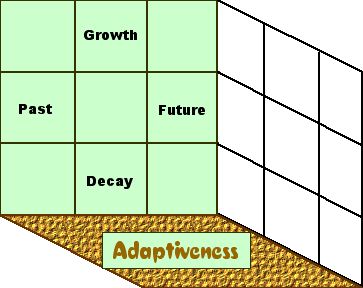

Mintz and Crosby explore different ends of the culture and biology puzzle in history.
concepts to know | irrationality | biological imperatives | markets
Two approaches from different perspectives is there any common ground?
| Authors | ||
|---|---|---|
| Mintz, Sweetness and Power | Crosby, Germs, Seeds, & Animals | |
| Argument | culture determines the ecological details that matter | ecology dictates the conditions of a culture |
|
||
|
||
|
"to learn the anthropology of sugar. . . " "in the making of new dietary patterns." ( p. 6 ) |
An unalterable change in the homogeneity & resilience of world crops that fueled a population expolsion and cultural fusion. |
Crosby's approach is that unintended consequence in history and ecology created A) the Columbian Exchange that B) promoted by an ecological invasion, C) prompted revolutionary changes in Europe, Asia, Africa, and the Americas.
1) Biology molds the environment and cultures, due to domestication, (agriculture) density of habitation, isolation, and the introduction of exotic creatures and diseases.2) Biology, because of ecological rules, is an inevitable partner of human endeavors.
3) Therefore economy is linked with ecology in a causal relationship such that one influences the other, and vice versa but with culture acting as a mediating influence.
Herman Daly would argue that an economy rises out of ecology in relation to what is surplus, what is usable (resources) and what is needed from many ecosystem
Other mainstream economists argue that the ecology is largely a free good, that means it comes as no cost to society. In that argument, the natural resources of say land planted in sugar cane, or trees on forested land is really an adjunct, or opportunistic addition to the economic system. Nature is not seen as fundamental to the market, in this view.
The economic system is analyzed as three contingent categories; where land, labor and capital are dominant costs in a system of production and consumption.
Mintz builds on these assumptions to inquire about the role of land, labor, wealth and historical change being altered by class preferences, power and susceptibility of people to pursue and fulfill their irrational drives or desires.
Mintz, however suggests that human fashion or taste drives change and thus, culture must be understood "not simply as a product but also a s production, not simply as socially constituted but also as socially constituting.”
“People were kidnapped from their homes and forced to work, even convicts worked the plantations. In 1870, there were 10 million Africans that arrived in American ports alive. Europeans reached to the Bahamas, Nicaragua, and the black lands of their Brazilian settlements for slaves.”
Crosby, p.87 & 82.
Mintz too argues that, slavery due largely to sugar production, caused changes and thus, “the foods acquired new meanings, but those meanings -- what the foods meant to people, and what people signaled by consuming them -- were associated with social differences of all sorts, including those of age, gender, class, and occupation.”
Mintz, p.151
“In 1650, the people of what was to become the United Kingdom lived on a starch-centered diet. Within a single century, they began to move toward a pattern that has since been adopted by many other societies.”
Mintz, p. 14.
John Burnett wrote “bread was the staple of life for the 80 to 90 percent or the population that made up the working classes,” in the mid-nineteenth century.
Mintz, p.127.
“By 1460, Madeira had its first sugar mill, and by 1478 it was the largest sugar producer in the Western world.”
Keen & Haynes, p. 53.
“Demand came to the rescue, absorbing the sensational rise of production on to the market in 1770’s; and at the end of the eighteenth century the prospects were bright enough to cause the opening of production beyond the Americas, in Mauritius, Java, and the Philippines.”
Mintz, p.160 & 161.
Thus, Mintz examines commodities and the power, inherent in the ways that natural products were transformed into commodities.
This transformation of a product from the land by application of labor with the assistance of much technology was due to people's desire for 'sweets,' based on a pre-existing diet of "starch-centered", but unpredictable quantities of nourishment and widespread poor nutrition.
The capacity of labor to extract nonperishable and refined materials from quick growing tropical grasses, and the ability of the land to continue growing the crop for export was only partially due a growing population and accumulating wealth.
An equally important change in behavior occurred and sugar production grew ever more extensive to meet the new found demands of social preferences and conspicuous consumption among all classes of English society.
![]()
There are five related pages on the Mintz readings:
![]()
Crosby | Mintz | Paz | Kincaid | Dubois